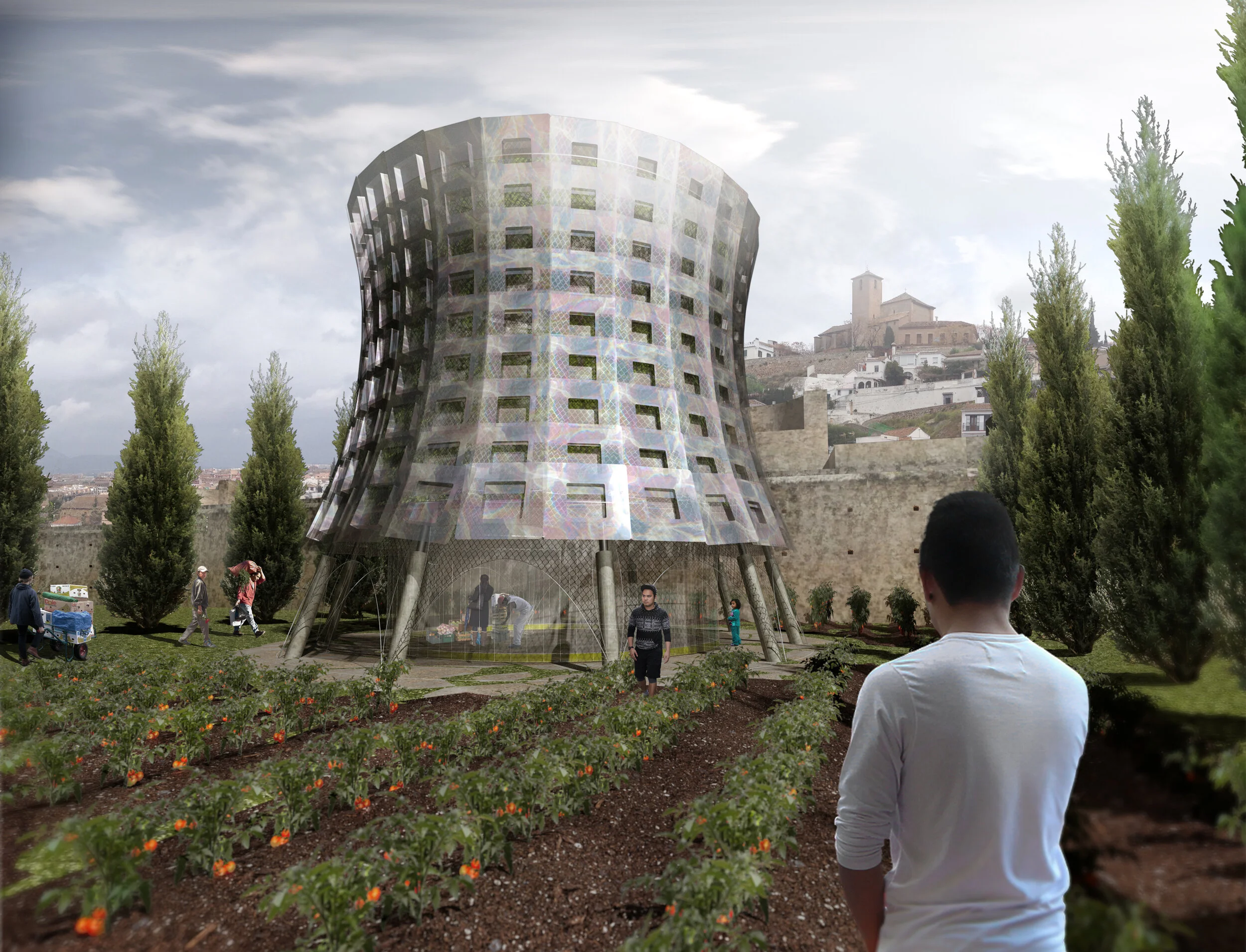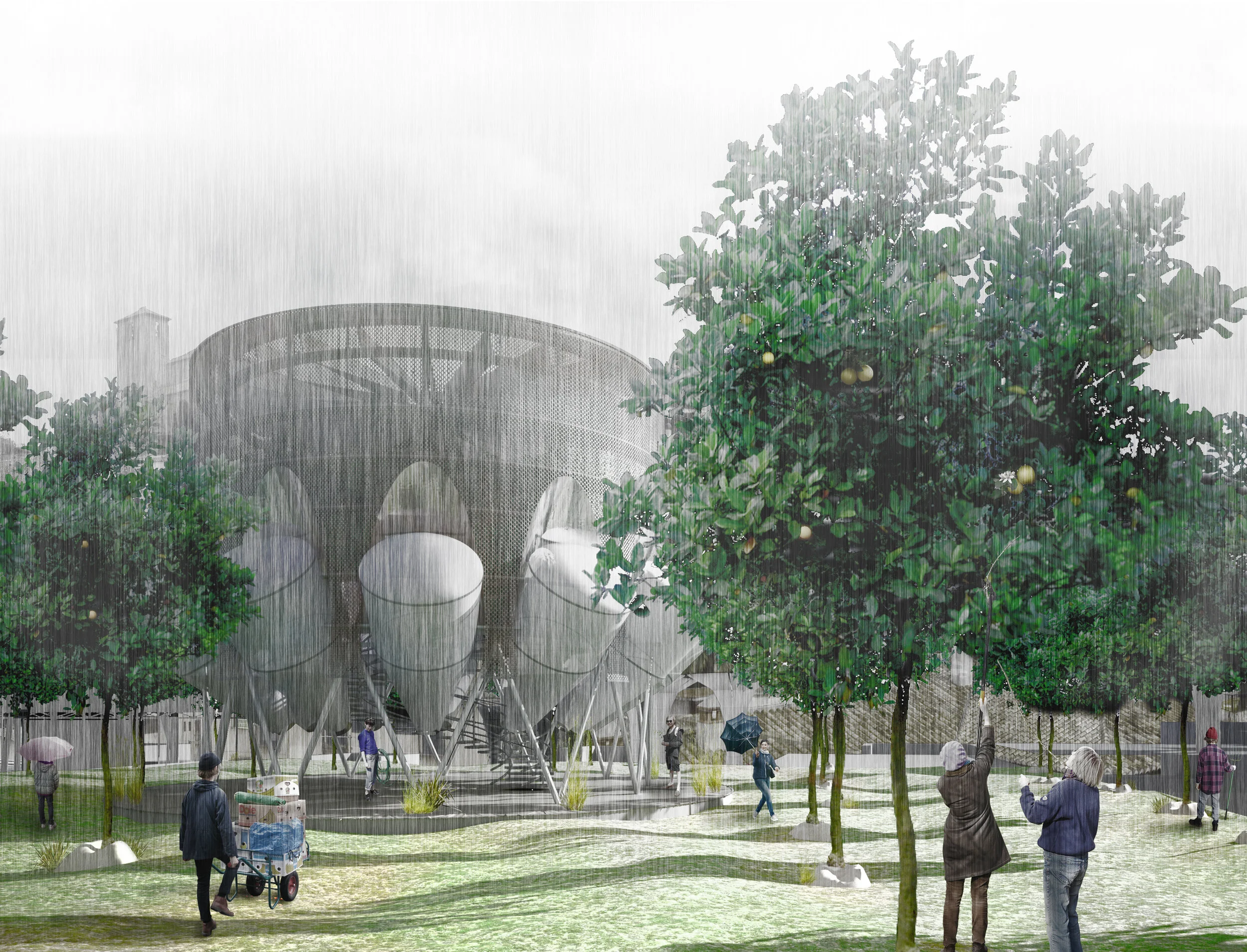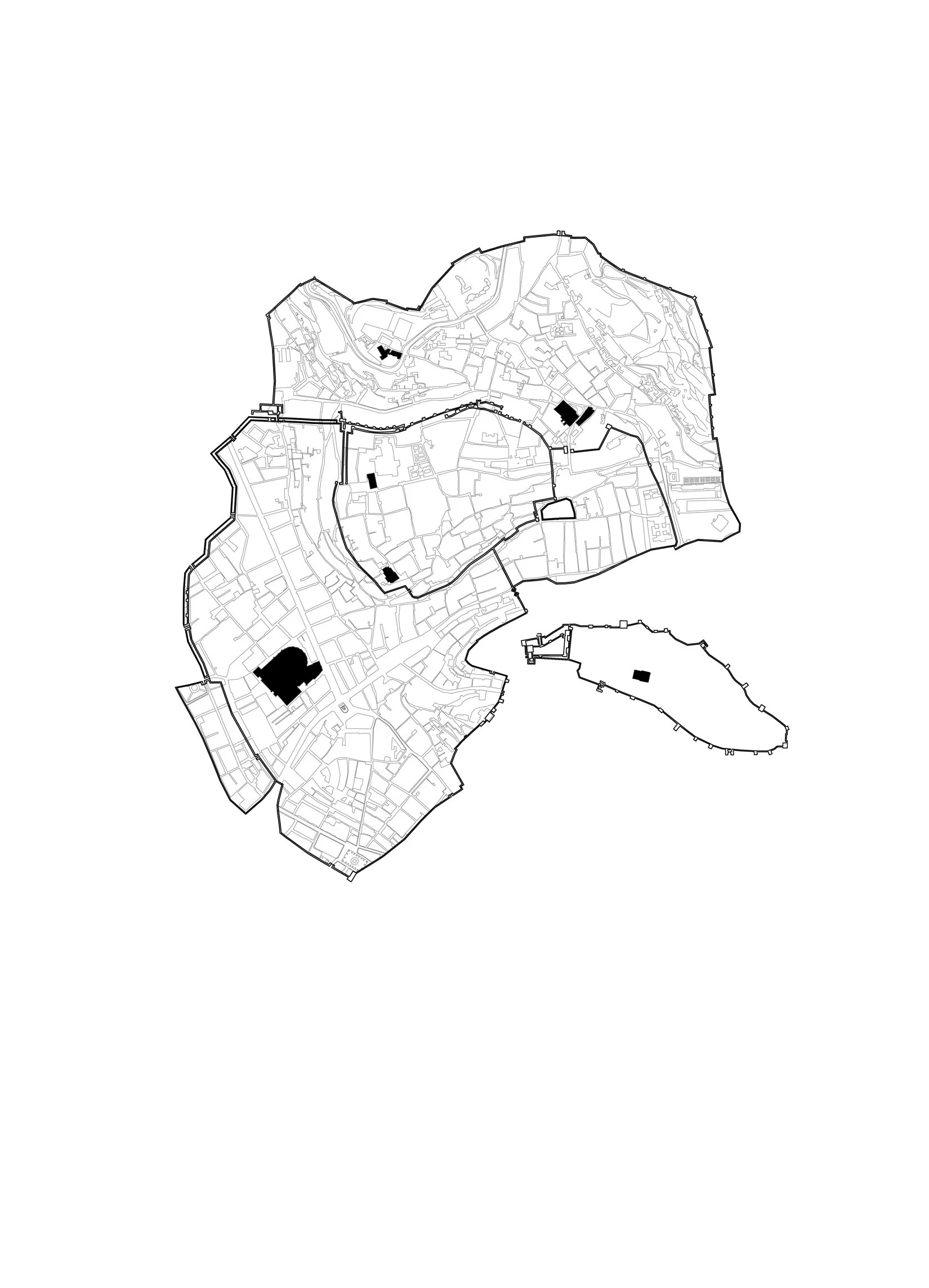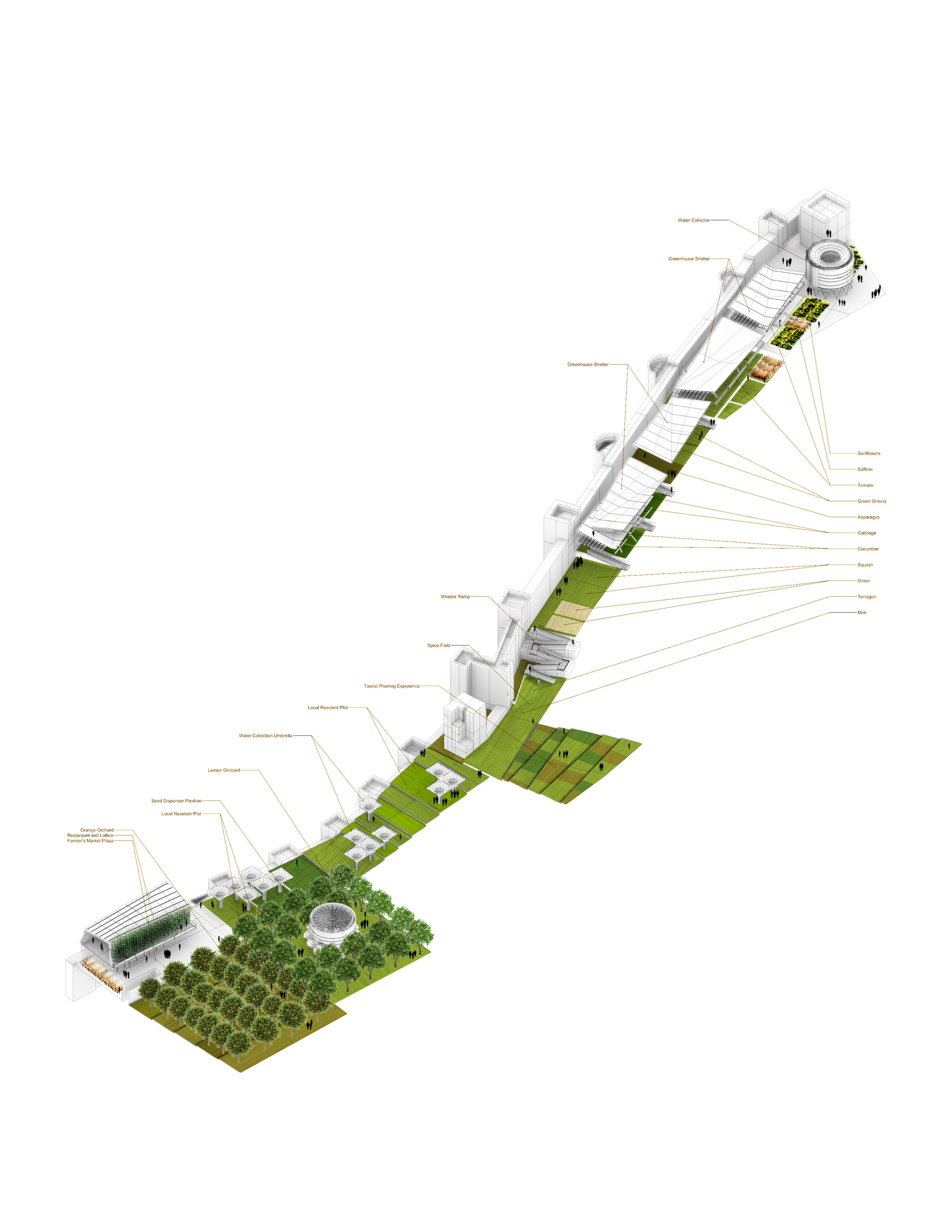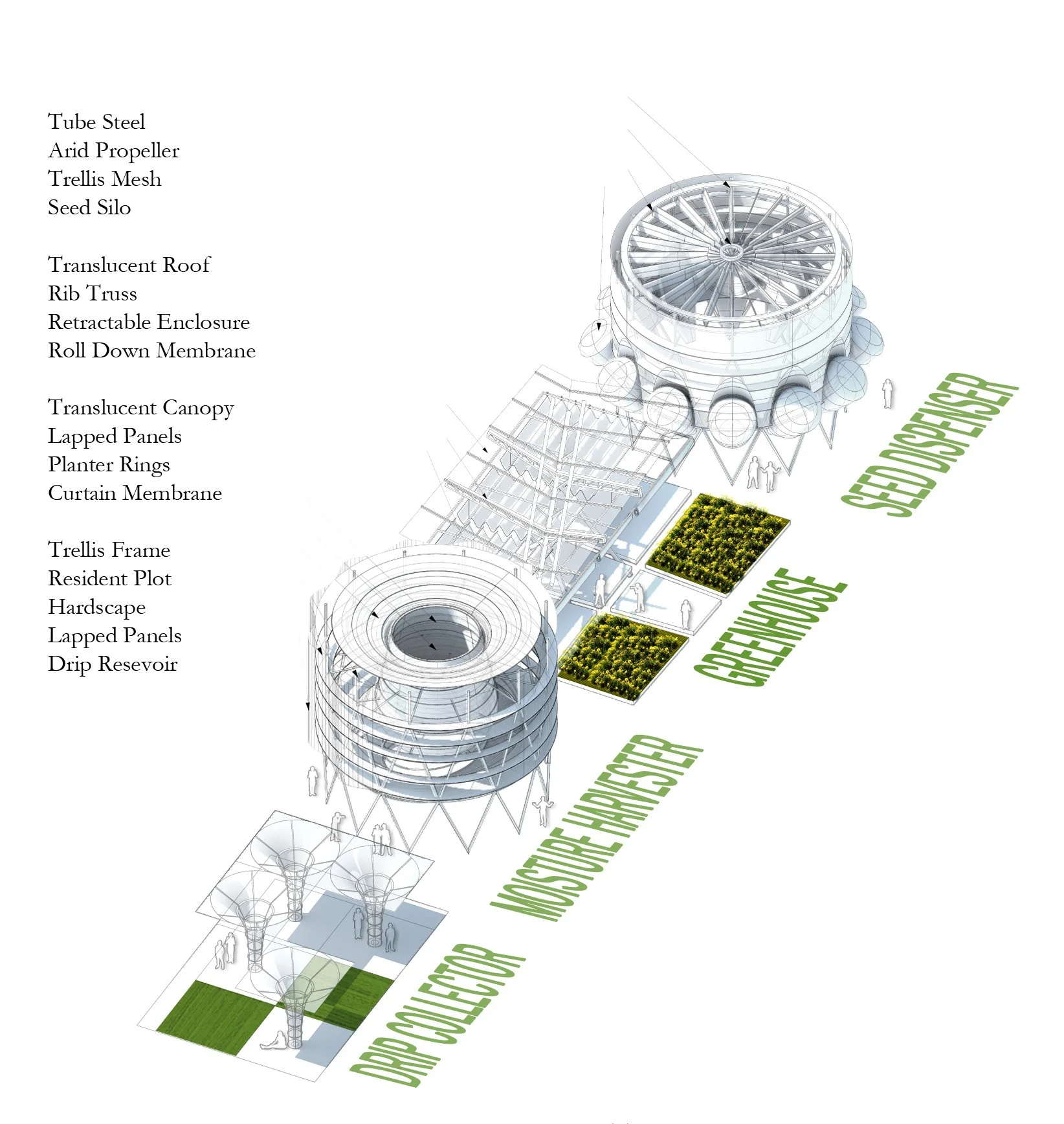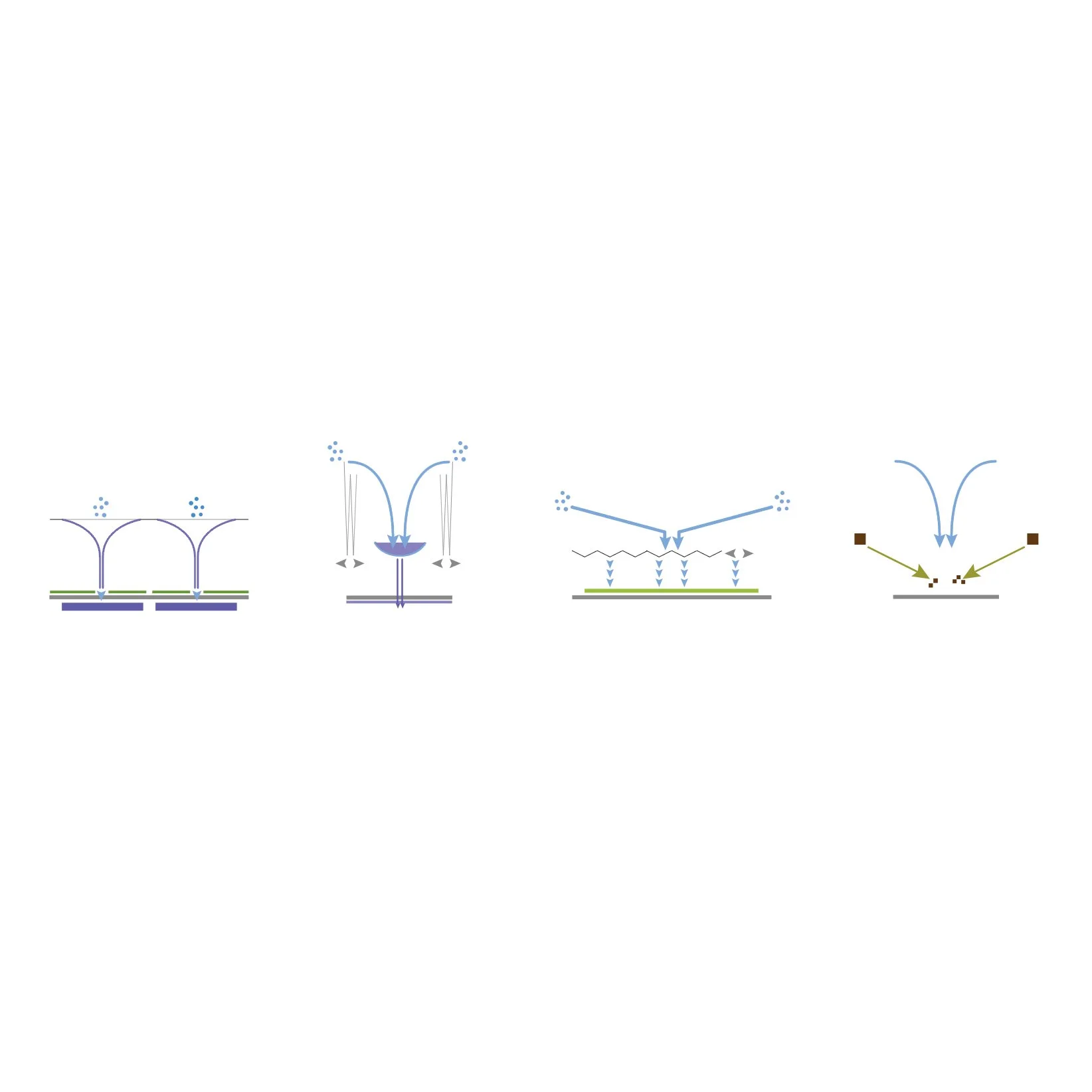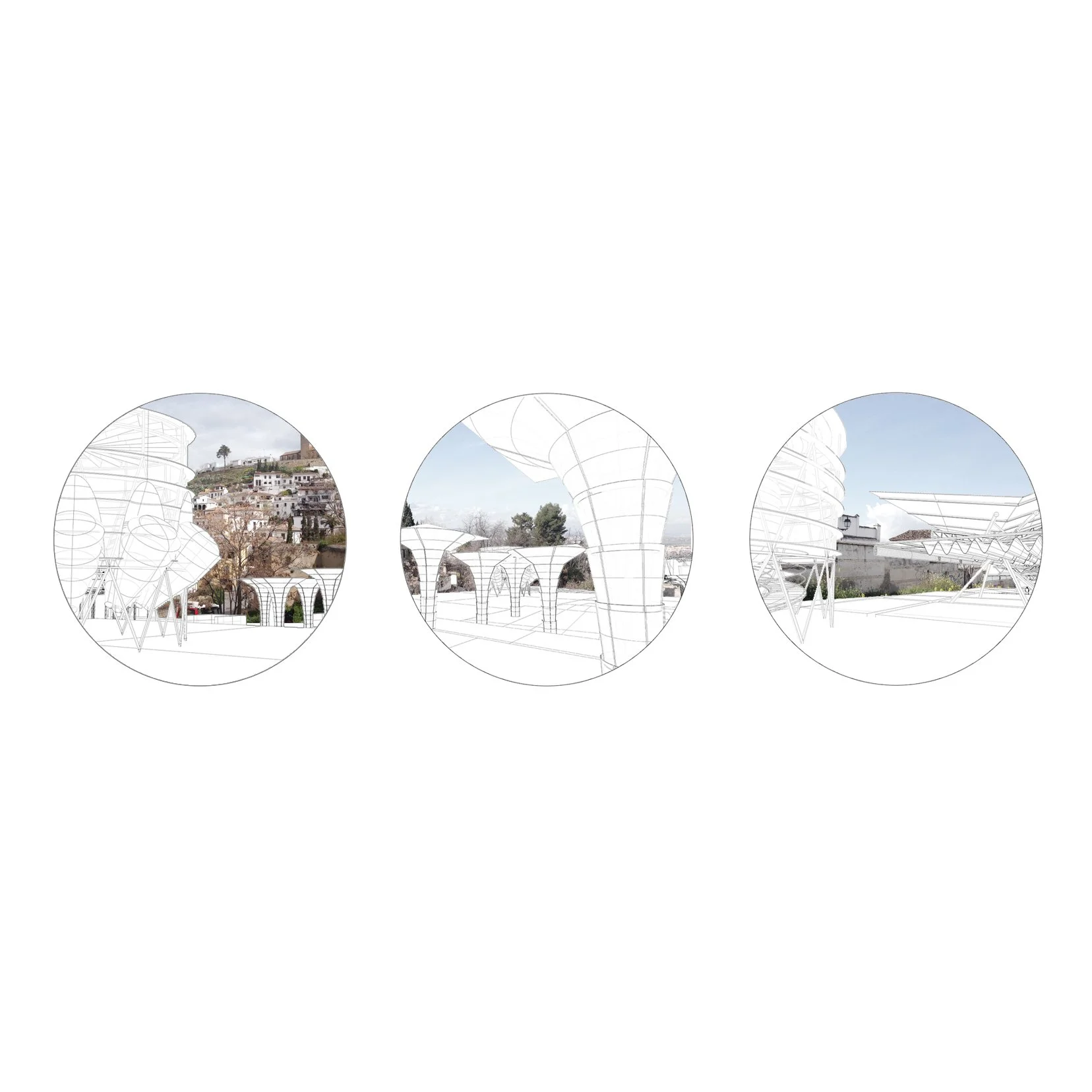GRANADA AGRICULTURAL PARK
Granada , Spain
The growth of Granada in the 12th century can be attributed to the settler’s ability to bring water to the site. The will to make water abundant led to the concentric growth of the city and its endowment with gardens and greenspace. This relationship between topography and water allowed Granada to become an ideal place for agricultural production. Today this is evident in the city’s rich culinary traditions.
Along with the site, a series of pavilions provide opportunities to collect water, provide shade and shelter for occupants, and seasonal greenhouse enclosure for vulnerable plants. Each of these structures is light constructions with passive enclosures that contribute to agricultural production on the site.
To the west, the site culminates in a restaurant and market plaza that serves up heftier dishes and allows local residents to sell excess crops to tourists. This is another aim of the project, which is to provide plots for local residents to grow their own crops with seed provided by the local government.
The project aims to promote the historical presence of water and its utility in producing agricultural and gastronomic experiences. On the menu are vital ingredients to Spanish tapas dishes, precursors to the main course.
IMAGES
DRAWINGS
